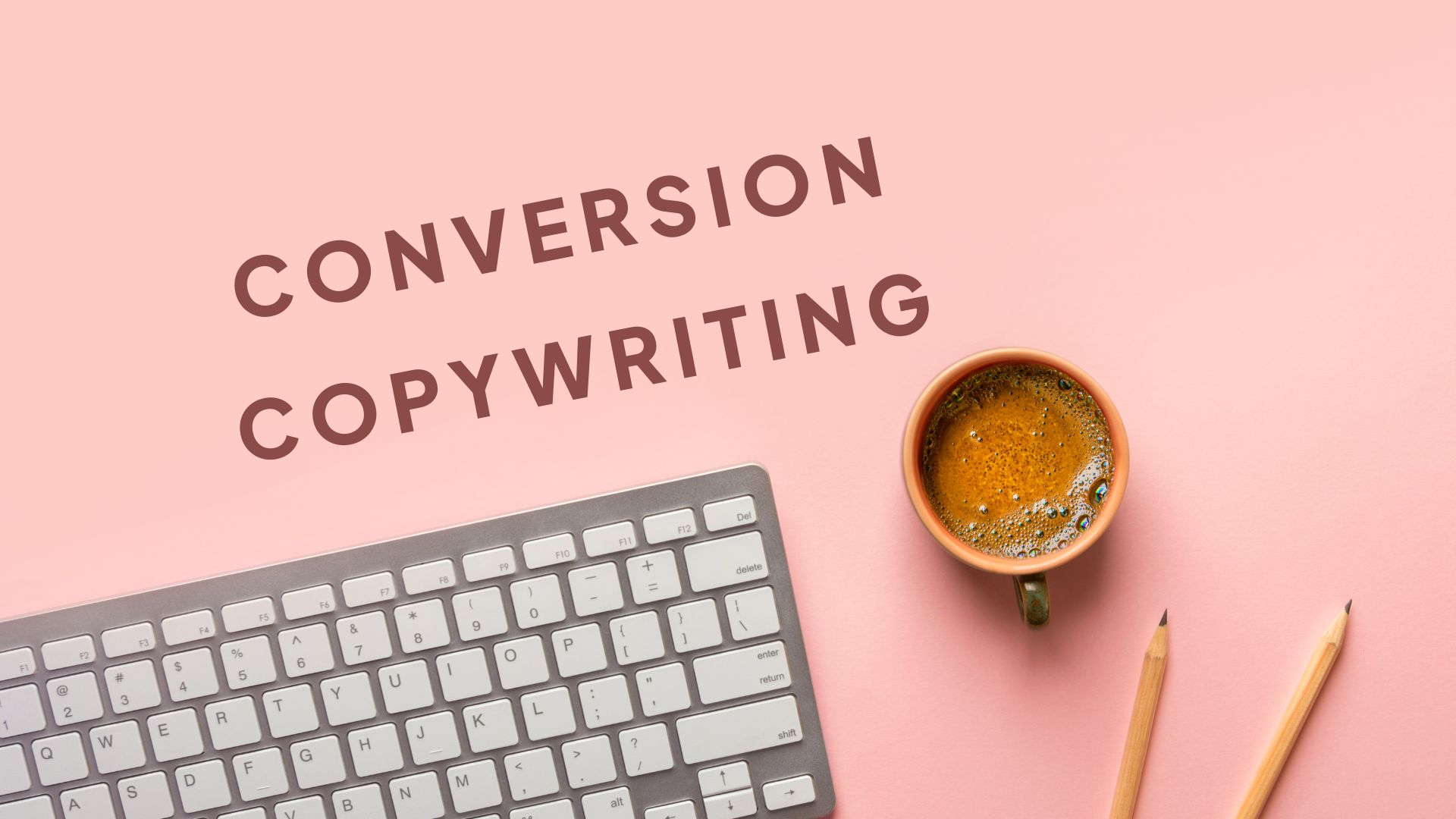Ever wondered why some websites make you click that “Buy Now” button almost instantly, while others leave you scrolling away? Welcome to the world of conversion copywriting—a powerful art of turning words into action.
Table of Contents
What is conversion copywriting? It’s like a digital salesperson, strategically crafting messages that speak directly to your audience’s hearts and minds. In today’s crowded online marketplace, where everyone is competing for attention, conversion copywriting is the secret weapon that transforms casual browsers into committed customers. It’s not just about writing fancy words; it’s about understanding human psychology, addressing pain points, and guiding potential customers through a journey that ends with them taking the exact action you want.
What is Conversion Copywriting?
Think of conversion copywriting like being a persuasive friend who helps someone make a decision. It’s not about tricking people, but about clearly showing them why something matters. Imagine you’re explaining why your favorite coffee shop is awesome—you’re not just listing facts, you’re telling a story that makes someone want to walk in and try it themselves. That’s conversion copywriting in a nutshell. It’s writing that doesn’t just inform, but actually gets people to take action, whether that’s buying a product, signing up for a service, or clicking a button.
Also Read: What Is Copywriting? The Ultimate Guide
The Importance of Conversion Copywriting
Let’s be real—businesses don’t survive on good intentions. They survive on people actually doing something. Conversion copywriting is like the difference between a boring sales pitch and a conversation that makes you pull out your wallet. It matters because:
- It turns casual readers into actual customers
- It helps businesses connect with real people
- It saves money by making marketing more effective
- It solves people’s actual problems, not just talks about them
Enroll Now: Become a certified AI Copywriter
The Conversion Copywriting Process
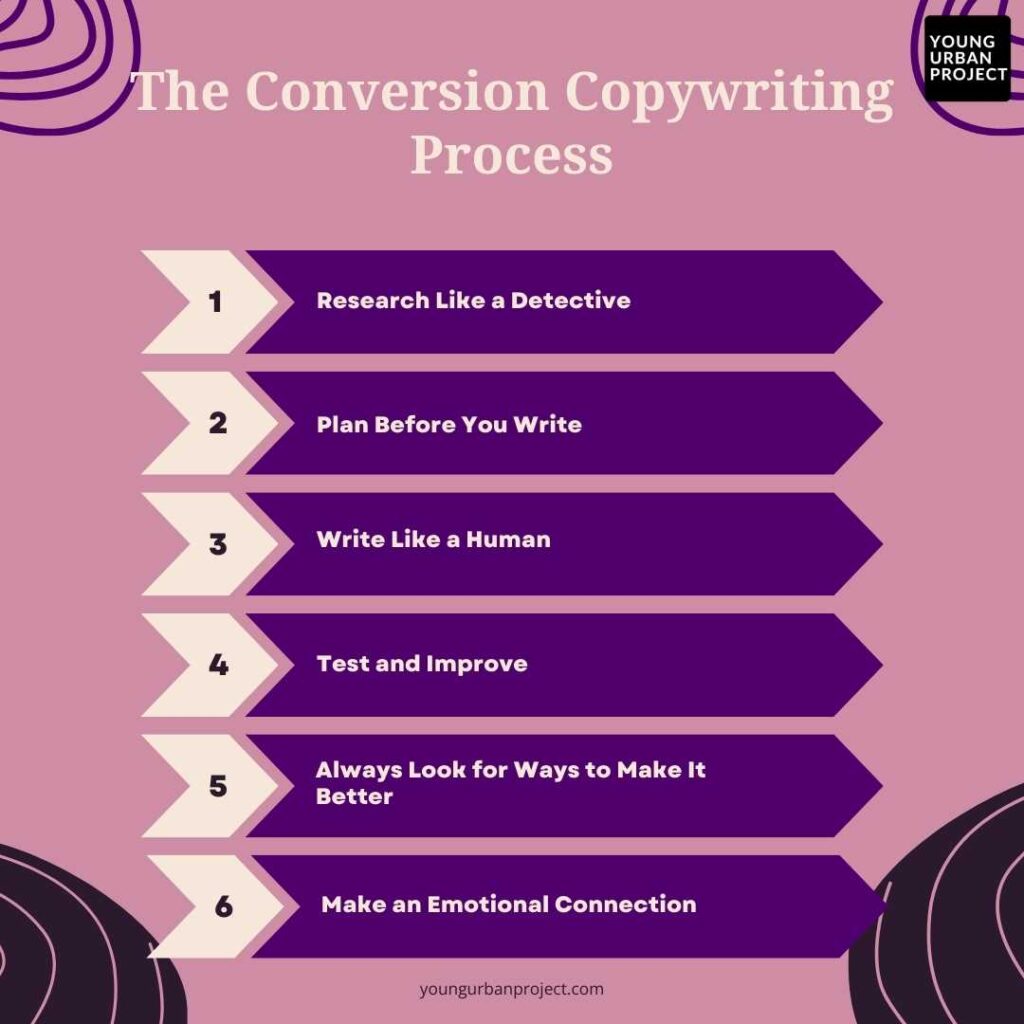
Step 1: Research Like a Detective
Before you start writing, you need to truly understand your audience. This means going beyond surface-level details and digging deep into their thoughts, struggles, and desires.
- Talk to real customers – Listen to their pain points, needs, and what they love or hate about similar products.
- Read reviews and feedback – Notice the exact words people use when describing their experiences.
- Identify common problems – What challenges do they face that your product or service can solve?
- Understand their emotions – What frustrates them? What makes them excited?
- Use their language – When you speak the way they do, your message will feel more natural and relatable.
The better you understand your audience, the easier it will be to write copy that connects and converts.
Step 2: Plan Before You Write
Jumping straight into writing without a plan is like going on a road trip without a map. Before you start, outline the key parts of your message:
- Where the most important points will go – What should people see first?
- How the information will flow – Make sure it’s easy to follow.
- Where to place the call-to-action (CTA) – Position it so it naturally encourages action.
- How visuals will support your message – Choose images and design elements that reinforce your words.
- What will guide the reader’s eye – Structure your copy so it’s easy to scan and understand.
A well-planned message makes your writing clearer and more persuasive.
Step 3: Write Like a Human
Now it’s time to write, but don’t overcomplicate things. Good copy is simple, clear, and natural.
- Solve real problems – Show your audience how you can help them.
- Write like you talk – Use a friendly, conversational tone.
- Make the action clear – Tell people exactly what to do next.
- Remove confusion – Keep your message straightforward and easy to understand.
- Build trust – Use real customer stories, testimonials, or data to back up your claims.
People don’t like to feel pressured. Your goal isn’t to sell—it’s to help. When your message feels natural and genuine, people are more likely to respond.
Step 4: Test and Improve
Once your copy is live, the real work begins. Great copy is never “finished”—it’s always being improved.
- See how people respond – Are they clicking the links? Are they reading to the end?
- Use analytics tools – Track user behavior to see what’s working.
- Test different versions – Small changes (like a new headline or CTA) can make a big difference.
- Be ready to change your approach – If something isn’t working, adjust it.
- Think of your copy as a work in progress – The best messages are refined over time.
The goal is to keep improving until your copy converts as well as possible.
Step 5: Always Look for Ways to Make It Better
Good copywriters don’t just write and forget. They keep learning and testing to make their copy even stronger.
- Never stop tweaking – Even high-performing copy can improve.
- Stay curious about your audience – Keep learning about their needs and behaviors.
- Try new ideas – Don’t be afraid to experiment with different messaging styles.
- Keep an open mind – What worked last year might not work today.
The best copywriters are always learning, adapting, and improving.
Step 6: Make an Emotional Connection
People don’t just buy products—they buy solutions to their problems and emotions. If your copy makes people feel understood, they’re more likely to take action.
- Understand their emotions – What feeling drives their decision?
- Go beyond selling – Show that you truly understand their struggles.
- Make them feel seen – Use words that reflect their real thoughts and experiences.
- Create trust – When people feel connected, they’re more likely to take the next step.
Great conversion copy isn’t just about facts—it’s about making people feel something.
How is Conversion Copywriting Different from Other Types of Copywriting?
Not all copywriting is the same. Some types of Copywriting focus on telling a story, while others build a brand. Conversion copywriting is different because its main goal is to get people to take action. It’s not just about writing—it’s about persuading.
Here’s a simple table to show how conversion copywriting compares to other types of copywriting:
| Feature | Conversion Copywriting | Other Types of Copywriting |
| Main Goal | Get people to take action (buy, sign up, click) | Inform, entertain, or build brand awareness |
| Approach | Focuses on persuasion and psychology | Can be creative, storytelling, or informative |
| Based On | Research, data, and testing | Creativity, brand voice, and general messaging |
| Tone | Direct, conversational, and personal | Can be formal, artistic, or storytelling-driven |
| Structure | Clear, structured, and action-driven | Can be more flexible and flowy |
| Key Focus | Solving the reader’s problem and guiding them to act | Engaging, educating, or entertaining the audience |
| Testing & Improvement | Always tested and improved based on results | Often set and left as is |
Why does this matter?
If you want more sales, sign-ups, or clicks, conversion copywriting is what you need. It guides people toward action instead of just giving them information. It’s a mix of writing, psychology, and strategy—all designed to get results.
Why Copywriting is Crucial for Conversions
1. Speaks Directly to Customer Needs
Your customers aren’t browsing randomly—they’re looking for solutions. Good copywriting cuts through the noise and talks exactly to what they’re struggling with. It’s like having a friend who gets exactly what you’re going through and knows how to help. No fancy words, just clear, honest communication that makes people feel understood and ready to take action.
2. Builds Trust and Credibility
People buy from brands they trust. Your words are the first handshake with potential customers. When your copy sounds genuine, relatable, and shows you truly understand their problems, you’re not just selling—you’re building a relationship. It’s about showing you’re a real person who cares, not just another company trying to make a quick buck.
3. Removes Buying Barriers
Most people hesitate before buying. Great copywriting acts like a friendly guide, answering questions before they’re even asked. It tackles fears, explains benefits, and makes the buying process feel simple and safe. By addressing potential concerns upfront, you’re removing mental roadblocks that stop people from saying “yes” to what you’re offering.
4. Creates Emotional Connection
Numbers and features are boring. Stories and feelings sell. Copywriting that taps into emotions—whether it’s solving a frustration, offering hope, or creating excitement—connects on a deeper level. When people feel something, they’re more likely to act. It’s about making them the hero of the story, not just a potential customer.
5. Guides the Customer Journey
Think of copywriting like a GPS for your customer’s buying process. It helps them navigate from “I’m interested” to “I’m buying”. Each word is strategically placed to move them forward, explain the next step, and make the entire experience feel smooth and natural. No confusion, just a clear path to getting what they want.
6. Differentiates Your Brand
In a world of endless options, why should someone choose you? Copywriting helps you stand out. It’s not just about what you sell, but how you talk about it. Your unique voice, personality, and approach can make you memorable. It turns you from just another option into the obvious choice for your ideal customer.
7. Increases Conversion Rates
At the end of the day, copywriting is about results. Well-crafted words can dramatically increase the number of people who take action. Whether it’s signing up, buying, or engaging, strategic copywriting makes each word work harder. It’s like turning up the volume on your marketing, making sure your message doesn’t just whisper—it sings.
Game-Changing Copywriting Secrets
1. Discover and Address Your Audience’s Needs, Struggles, and Desires
People buy solutions, not products. Listen to what customers actually complain about. Read their reviews. Talk to them. Understand their real struggles. What keeps them up at night? What frustrates them? The more you know their world, the better you can show how your product solves their specific problem.
2. Create a Clear and Irresistible Value Proposition
Why should someone choose you? Make it crystal clear. What makes you different? Don’t just list features. Explain the unique benefit customers get. Think like a customer asking, “What’s in it for me?” Your value proposition is your elevator pitch. Make it sharp, simple, and impossible to ignore.
3. Leverage the Power of Persuasive Language
Words matter. A lot. Instead of “cheap,” say “budget-friendly.” Replace “expensive” with “premium.” Choose words that feel positive and empowering. Your language can turn a potential turn-off into an attractive description. It’s about framing your offer in the most appealing way possible.
4. Write Landing Page Copy That Converts
Keep it simple. Super simple. One message. One goal. Remove distractions. Make your headline clear. Explain benefits quickly. Use bullet points. Add a single, powerful call-to-action. People don’t read; they scan. Make it easy for them to understand and act.
5. Tap Into Emotional Triggers for Maximum Impact
People buy with emotions, then justify with logic. Tell stories that hit the heart. Show how your product makes life better, easier, or more exciting. Use language that creates feelings. Make them imagine life after choosing your solution. Emotions drive decisions.
Also Read: Copywriting vs Content Writing
6. Craft Clear, Action-Driven CTAs
Your call-to-action is your money maker. Use action words. “Get Started Now.” “Claim Your Discount.” Make it big. Make it bold. Tell people exactly what they’ll get. Remove any confusion. The CTA should feel like an exciting invitation, not a boring button.
7. Incorporate Social Proof to Build Trust
People trust other people more than ads. Show real testimonials. Share customer stories. Display ratings. Use screenshots of actual results. When potential customers see others succeeding, they’re more likely to believe in your product. Real stories beat marketing speak every time.
8. Use Scarcity and FOMO to Drive Quick Decisions
Create a sense of “act now or miss out.” Limited spots. Ending soon. Special offer. People hate missing good deals. Use countdown timers. Show limited quantities. Make them feel they might lose something amazing if they don’t act quickly. Urgency drives action.
9. Test and Optimize Your Copy with A/B Experiments
Don’t guess. Test everything. Try different headlines. Change button colors. Modify descriptions. See what actually works. Small changes can mean big results. Keep experimenting. What works today might not work tomorrow. Stay curious and data-driven.
10. Tailor Copy for Every Stage of the Sales Funnel
Not all customers are the same. Someone just learning about you needs different words than someone ready to buy. Awareness stage? Educate. Consideration stage? Compare. Decision stage? Push them to act. Match your language to their buying journey.
11. Make Your Copy Personal for Better Engagement
Make it feel like you’re talking directly to them. Use their name. Reference their specific problem. Show you understand their unique situation. Generic messages get ignored. Personal, targeted messages get attention. Make each reader feel like you’re speaking just to them.
12. Optimize Copy for Better Form Conversions
Make forms brain-dead simple. Fewer fields. Clear instructions. Tell them exactly what happens next. Remove any friction. Explain why you need information. Use friendly language. Make submitting a form feel like an easy, positive experience. No one likes complicated forms.
Conversion Copywriting Principles for High-Impact CTAs
1. Know Your Destination Before You Start
Every great journey needs a clear endpoint. What do you want people to do? Buy? Sign up? Download? Get laser-focused on your goal before writing a single word. Your entire message should point to this one specific action. No wandering, no confusion. Just a straight path to conversion.
2. Speak Their Language, Not Your Corporate Jargon
Forget fancy words. Talk like a real person. Listen to how your customers actually speak. Check their reviews, social media, forums. Use their words, their phrases. When your copy sounds like a friend chatting, people pay attention. Authentic communication beats corporate speak every single time.
3. Decode Your Audience’s Awareness Level
Not everyone’s ready to buy right away. Some are just learning about their problem. Others are comparing options. Some are seconds from purchasing. Tailor your message to where they are in their journey. Early stage? Educate. Late stage? Push them to act. Match your tone to their readiness.
4. Shine a Spotlight on Their Biggest Frustrations
People don’t want features. They want solutions to their problems. What keeps them up at night? What drives them crazy? Dig deep. Show them you understand their struggle. Then position your product as the ultimate relief. Make them feel seen and understood.
5. Don’t Reinvent the Wheel
Great copy doesn’t always mean starting from zero. Look at what’s working. Study successful campaigns in your industry. Steal smart strategies. Adapt proven formulas. Learn from others’ successes. But always add your unique twist. Innovation often comes from smart modification.
6. Trigger Their Fear of Missing Out
Humans hate losing more than they love winning. Create scarcity. Limited spots. Ending soon. Exclusive offer. Make them feel they’ll miss something amazing if they don’t act now. But keep it genuine. Fake urgency backfires. Real urgency converts.
7. Let Others Do the Talking
People trust people, not brands. Show real results. Customer testimonials. Success stories. Ratings. Screenshots of actual wins. When potential customers see others succeeding, they’re more likely to jump in. Authentic social proof is more powerful than any marketing pitch.
8. Predict and Crush Their Doubts
Customers have questions. Address them head-on. What might stop them from buying? Price? Complexity? Time? Tackle these objections before they become barriers. Be transparent. Show how you solve their potential concerns. Remove friction before it happens.
Powerful Copywriting Frameworks (With Examples)
1. AIDA (Attention, Interest, Desire, Action)
The AIDA framework is a classic copywriting model that grabs attention, builds interest, creates desire, and pushes for action. It’s widely used in advertising, emails, and sales pages because it follows the natural flow of customer decision-making. Let’s learn more with a made-up brand called ‘Leopard Balm (Headache Relief Ointment)’.
Example – Facebook Ad for Leopard Balm ⚡:
Say Goodbye to Headaches in Just Minutes with Leopard Balm!
ATTENTION: Do headaches ruin your day? Whether it’s stress, exhaustion, or long hours on screens—don’t let pain slow you down!
INTEREST: Meet Leopard Balm—a powerful, fast-acting ointment designed to wipe out headaches naturally! Just a dab on your temples, and feel the soothing relief kick in within minutes. No pills, no side effects—just pure, instant comfort.
DESIRE: Imagine going from throbbing pain to cooling relief in seconds. Whether you’re at work, at home, or on the go, Leopard Balm is your secret weapon against tension and migraines. The best part? It’s 100% natural and trusted by thousands.
ACTION: Don’t wait for the next headache to strike! Click “Shop Now” and grab your Leopard Balm today—because you deserve pain-free days!
[Shop Now] ⬅ Limited stock available!
2. AIDCA (Attention, Interest, Desire, Conviction, Action)
AIDCA expands on AIDA by adding “Conviction,” which strengthens the prospect’s trust before urging action. This is especially useful when selling products that require reassurance, like health-related items.
Example – Facebook Ad for Leopard Balm⚡:
Knock Out Headaches in Minutes with Leopard Balm!
ATTENTION: Tired of pounding headaches that ruin your day? Whether it’s stress, screen time, or exhaustion—don’t let pain take over!
INTEREST: Meet Leopard Balm, the ultra-powerful headache relief ointment that works FAST. Just a small dab on your temples, and feel the cooling sensation melt away the pain—no pills, no waiting!
DESIRE: Imagine getting instant relief anywhere, anytime. No more struggling through work, sleepless nights, or long commutes with a headache! Leopard Balm is your natural, go-to solution for on-the-spot relief.
CONVICTION: Trusted by thousands, made with 100% natural ingredients, and proven to provide fast relief—this isn’t just another balm, it’s a game-changer!
ACTION: Stop suffering—take control now! Click “Shop Now” and get your Leopard Balm today!
[Shop Now] ⬅ Limited stock available—order before it’s gone!
3. PAS (Problem, Agitation, Solution)
PAS focuses on identifying a problem, amplifying its frustration, and offering the perfect solution. This framework is powerful because it makes the customer feel their pain deeply before showing them relief.
Example – Facebook Ad for Leopard Balm⚡:
Headaches Ruining Your Day? Read This!
PROBLEM: Nothing’s worse than a splitting headache—whether it’s from stress, long hours on screens, or lack of sleep. The pain makes it impossible to focus, work, or even relax.
AGITATION: You try popping painkillers, but they take forever to work (and come with side effects). You massage your temples, but the throbbing just won’t stop. You need fast relief—but nothing seems to work!
SOLUTION: Meet Leopard Balm—your instant headache relief hero! Just apply a dab on your temples and feel the cooling sensation erase your headache in minutes. 100% natural, no pills, no waiting—just pure relief.
Don’t suffer any longer! Click “Shop Now” and grab your Leopard Balm today!
[Shop Now] ⬅ Limited stock—order before it’s gone!
4. ACCA (Awareness, Comprehension, Conviction, Action)
ACCA is useful for educating the audience before persuading them to take action. It’s especially helpful when introducing a product that people might not be familiar with.
Example – Facebook Ad for Leopard Balm⚡:
Headaches Holding You Back? Not Anymore!
AWARENESS: Headaches can strike anytime—after a long day, endless screen time, or just from stress. The pain is distracting, frustrating, and makes everything harder.
COMPREHENSION: Most solutions take too long or come with side effects. But what if you could get fast, natural relief in minutes? That’s exactly what Leopard Balm does. Just apply a small dab, and let the cooling formula wipe out your headache—instantly!
CONVICTION: Thousands trust Leopard Balm for quick, pill-free relief. 100% natural, safe, and proven effective, it’s the must-have solution for anyone who wants to stop headaches—FAST.
ACTION: Don’t let headaches slow you down! Click “Shop Now” and grab your Leopard Balm today!
[Shop Now] ⬅ Limited stock—order before it’s gone!
5. QUEST (Qualify, Understand, Educate, Stimulate, Transition)
QUEST is a structured framework ideal for guiding prospects through a logical buying journey—especially when the product needs a bit of explanation.
Example – Facebook Ad for Leopard Balm⚡:
Stop Headaches in Their Tracks with Leopard Balm!
QUALIFY: Do you struggle with frequent headaches that make it hard to focus, work, or relax? You’re not alone—millions deal with the same frustrating pain daily.
UNDERSTAND: You’ve tried everything—painkillers take too long, massages don’t help, and the pain just keeps coming back. You need a solution that works fast, naturally, and without side effects.
EDUCATE: Leopard Balm is a powerful, natural ointment designed to wipe out headaches in minutes. Just a small dab on your temples, and let the cooling formula soothe away tension and pain—no pills, no chemicals, just instant relief.
STIMULATE: Imagine feeling the pain disappear within moments, giving you the energy and focus to take on your day. That’s what Leopard Balm delivers—fast, effective relief trusted by thousands!
TRANSITION: Don’t let headaches control your life! Click “Shop Now” and get your Leopard Balm today!
[Shop Now] ⬅ Limited stock—order before it’s gone!
6. Hero’s Journey
The Hero’s Journey is a storytelling framework that positions the customer as the “hero” and your product as the guide that helps them overcome their struggle.
Example – Facebook Ad for Leopard Balm⚡:
Conquer Headaches Like a Hero with Leopard Balm!
THE CALL TO ADVENTURE: You’re going about your day when suddenly—a headache strikes. The throbbing pain makes it impossible to focus, work, or enjoy time with loved ones. You need relief, but nothing seems to work fast enough.
THE CHALLENGE: You’ve tried painkillers, but they take too long and come with side effects. Massaging your temples helps for a moment, but the pain always returns. The battle against headaches feels never-ending.
THE GUIDE APPEARS: Meet Leopard Balm—your ultimate headache-fighting companion. With a simple dab on your temples, feel the cooling sensation melt away pain in minutes—no pills, no waiting, just instant relief.
THE TRANSFORMATION: Imagine a life where headaches don’t hold you back. No more struggling through meetings, sleepless nights, or ruined plans. With Leopard Balm, you reclaim your day—energized, focused, and pain-free.
THE VICTORY: Thousands trust Leopard Balm for fast, natural relief. Now, it’s your turn to become the hero of your own story.
THE FINAL STEP: Take action now—click “Shop Now” and defeat headaches for good!
[Shop Now] ⬅ Limited stock—grab yours before it’s gone!
Conversion Copywriting Examples
1. Who Gives A Crap
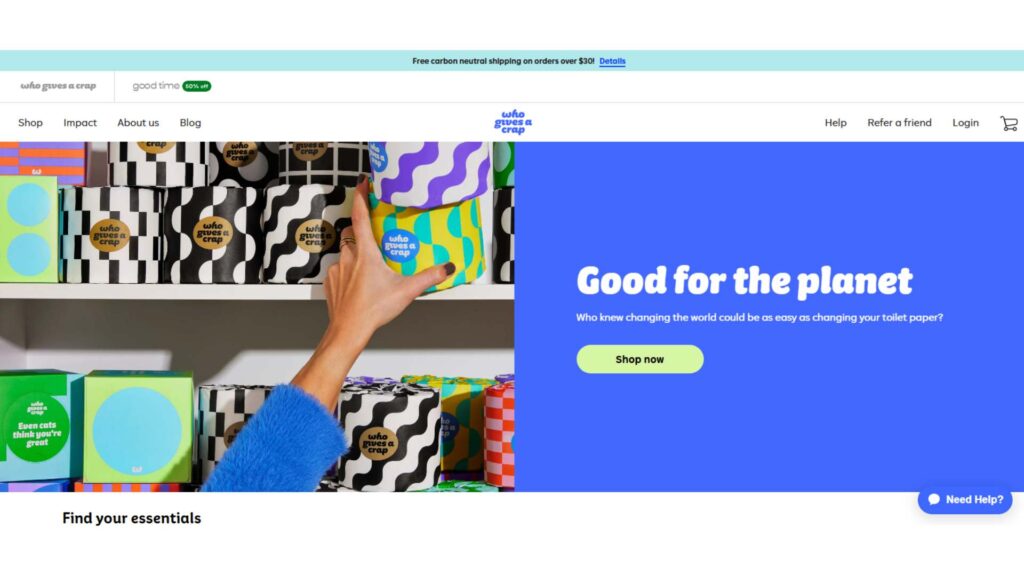
Who Gives a Crap’s homepage copy turns an everyday product into a powerful movement. The bold headline, “Good for the planet,” instantly highlights the brand’s eco-friendly mission. The supporting text, “Who knew changing the world could be as easy as changing your toilet paper?” makes sustainability feel effortless and fun, removing guilt from the buying decision. The playful, conversational tone makes visitors feel like they’re part of something bigger. A clear “Shop now” call-to-action encourages immediate action, making it easy to support a good cause.
Conversion Triggers:
- Leads with a strong mission statement (“Good for the planet”)
- Makes eco-friendly choices feel easy and impactful
- Uses a fun, conversational tone to engage users
- Creates emotional connection by linking purchase to global change
- Simplifies decision-making with a direct “Shop now” CTA
2. Slack
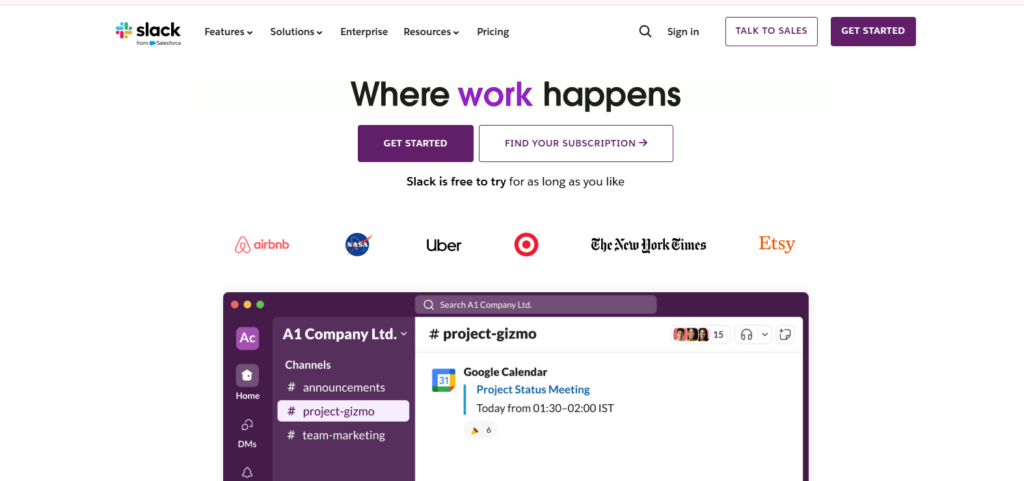
Slack’s homepage copy is clear, confident, and action-driven. The headline, “Where work happens,” immediately positions Slack as the go-to platform for team collaboration. The messaging is simple yet powerful, showing that Slack is the central hub for communication and productivity. The “Get started” and “Find your subscription” CTAs provide clear next steps, making it easy for users to take action. Finally, “Slack is free to try for as long as you like” removes any risk, encouraging users to explore the platform without commitment.
Conversion Mechanics:
- Strong positioning (“Where work happens” sets Slack as essential)
- Keeps the message clear and direct with minimal text
- Encourages quick action with “Get started” CTA
- Provides flexible options with “Find your subscription”
- Removes hesitation by offering a risk-free trial
3. Headspace
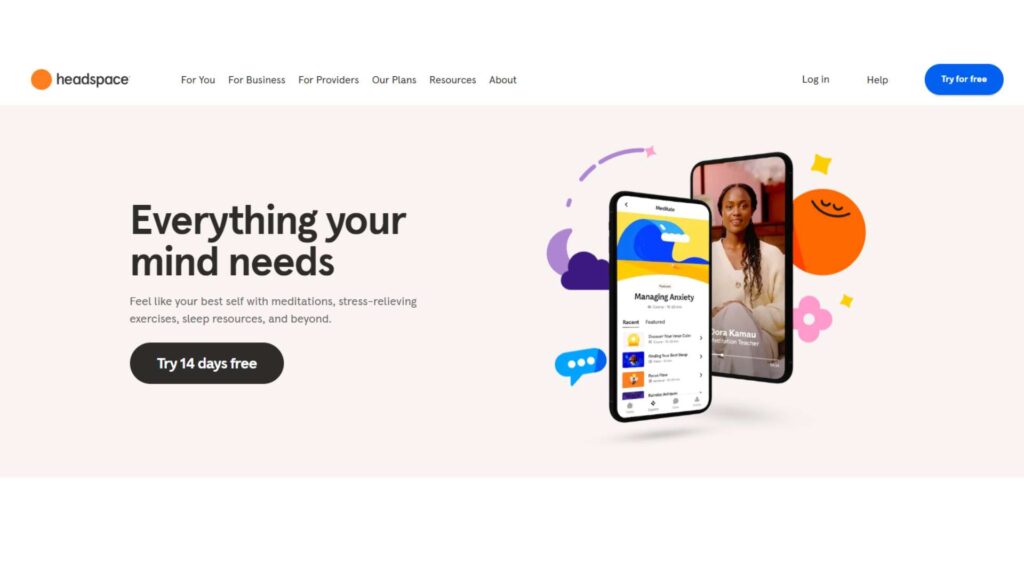
Headspace’s homepage copy is simple, clear, and emotionally engaging. It immediately speaks to visitors by addressing common struggles like stress, anxiety, and trouble sleeping. The headline, “Everything your mind needs,” reassures users that Headspace offers a complete solution for mental well-being. The supporting text highlights meditation, stress relief, and sleep resources, making it clear how the app helps. The friendly, jargon-free language makes mindfulness feel approachable, even for beginners. A prominent “Try 14 days free” call-to-action lowers the risk for new users, encouraging them to start without hesitation.
Conversion Triggers:
- Speaks directly to user needs (stress, anxiety, better sleep)
- Uses a reassuring, all-in-one message (“Everything your mind needs”)
- Feels warm and inviting with clear, simple language
- Removes hesitation with a 14-day free trial
- Builds trust (trusted by millions, backed by science)
- Encourages quick action with a strong call-to-action
Conversion Copywriting Mistakes That Kill Your Sales
1. Information Overload: When More Becomes Less
Customers don’t want a novel. They want a quick, clear message. Too much information drowns your main point. People get confused and click away. Keep it simple. Use short paragraphs. Break down complex ideas. Your goal is clarity, not showcasing everything you know.
2. The Forgotten Call-to-Action
No CTA? Might as well be invisible. Your entire copy should lead somewhere. Make your call-to-action bold, clear, and impossible to miss. Tell people exactly what to do next. “Buy Now” beats “Maybe consider this.” Be direct. Be confident. Guide them.
3. Mobile Nightmare: Ignoring Smartphone Users
Most people browse on phones now. If your copy looks terrible on mobile, you’re losing customers. Check your formatting. Use shorter sentences. Make buttons big enough to tap. Ensure readability on small screens. Mobile optimization isn’t optional—it’s critical.
4. Ignoring Customer Concerns
People have doubts. Address them head-on. What might stop someone from buying? Price? Quality? Time commitment? Tackle these concerns before they become roadblocks. Be transparent. Show you understand their hesitation. Turn objections into opportunities.
5. Skipping the Testing Phase
What works today might flop tomorrow. Always test your copy. Try different headlines. Swap out words. See what actually converts. Use A/B testing. Track your results. Be willing to change. Conversion is a science, not a one-time thing.
6. Forgetting Your Audience’s Language
Stop using fancy corporate speak. Talk like a real person. Use the words your customers use. Read their reviews. Check their forums. When your copy sounds like a friend, people listen. Authenticity beats corporate jargon every single time.
7. Neglecting Emotional Connection
Features don’t sell. Feelings do. People buy based on emotions and justify with logic. Tell stories. Show how your product changes lives. Make them feel something. Connect on a human level. Your copy should spark an emotional response.
8. Weak Social Proof
Nobody trusts a lone voice. Show real results; customer testimonials, case studies, and ratings. When potential customers see others winning, they’re more likely to join. Real stories beat marketing promises. Make your success visible and believable.
Understanding Your Conversion Performance
Tracking your marketing efforts isn’t about drowning in numbers. It’s about understanding what’s working and what’s not. These metrics are like a health check for your business. They tell you if your copy is hitting the mark or missing the target. Think of them as a dashboard that shows how well you’re connecting with customers and turning interest into action.
Key Metrics to Track
1. Conversion Rate
The money-maker metric. How many visitors actually do what you want? Buy, sign up, download. Calculate it by dividing total conversions by total visitors. A good conversion rate varies by industry. Don’t obsess over perfection. Look for consistent improvement. Small bumps can mean big dollars.
2. Click-Through Rate (CTR)
Measures how many people click your links or ads. High CTR means your message is working. Low CTR? Time to rethink your approach. It shows if your headline, description, or call-to-action is actually grabbing attention. Track it across different channels. Learn what makes people click.
3. Bounce Rate
How quickly are people leaving your page? High bounce rate means something’s not connecting. Maybe your copy doesn’t match expectations. Or the page loads too slowly. Or the message feels off. It’s a red flag that needs investigation. Lower is better. Aim to keep people interested.
4. Time Spent on Page
Quality matters more than quantity. Are people actually reading? Longer time usually means more engagement. But context matters. A product page might need less time than a detailed guide. Use this metric to understand if your content is truly connecting.
5. Engagement Metrics
Shares, comments, likes. These show if people find your content valuable. It’s word-of-mouth in the digital age. High engagement means you’re creating something worth talking about. Track what type of content gets the most interaction.
6. Customer Acquisition Cost (CAC)
How much are you spending to get each customer? Lower is better. Calculate by dividing total marketing spend by number of new customers. It helps you understand the efficiency of your marketing efforts. A good metric for budget-conscious businesses.
Tools to Measure Performance
1. Google Analytics
To assess website traffic and behaviour of website visitors.
The Swiss Army knife of tracking. Free and powerful. See who visits your site, where they come from, what they do. Track conversions, create custom reports. It’s like having a detective investigating your website’s performance. Essential for any serious marketer.
Also Read: Hand-picked 30 AI Tools for Digital Marketing
2. Hotjar
For user interaction analysis. To assess how users are behaving on a web page and which elements are they interacting with.
See how people actually use your site. Heat maps show where people click. Recordings let you watch user sessions. It’s like having x-ray vision for your website. Understand user behavior beyond just numbers. See what really catches their eye.
3. Crazy Egg or Microsoft Clarity
For heat mapping. To see how people are scrolling and behaving on your webpages.
Visual analytics tools. They show how people scroll, where they click, what catches their attention. Heatmaps make complex data easy to understand. Spot exactly where you’re losing people. Make data-driven improvements to your site.
4. Optimizely and VWO
To conduct split experiments or multi-variate experiments and determine the winning elements on a webpage.
A/B testing champions. Try different versions of your page. Test headlines, images, call-to-actions. See what actually converts. These tools take guesswork out of optimization. Small changes can mean big results.
5. Email Marketing Platforms
Mailchimp, ConvertKit, others. Track email open rates, click rates, conversions. See what subject lines work. Which content gets attention. Email metrics are gold for understanding your audience. They show what messages truly resonate.
Also Read: What is Email Copywriting: Complete Guide
Best Copywriting Books
Copywriting isn’t just about writing—it’s about understanding people. The right books can transform how you communicate, sell, and connect. These aren’t just textbooks; they’re treasure maps to human psychology, marketing magic, and persuasive writing. Whether you’re a beginner or a seasoned pro, these hand-picked copywriting books will give you tools to craft messages that truly resonate and drive action.
1. “Ogilvy on Advertising” by David Ogilvy
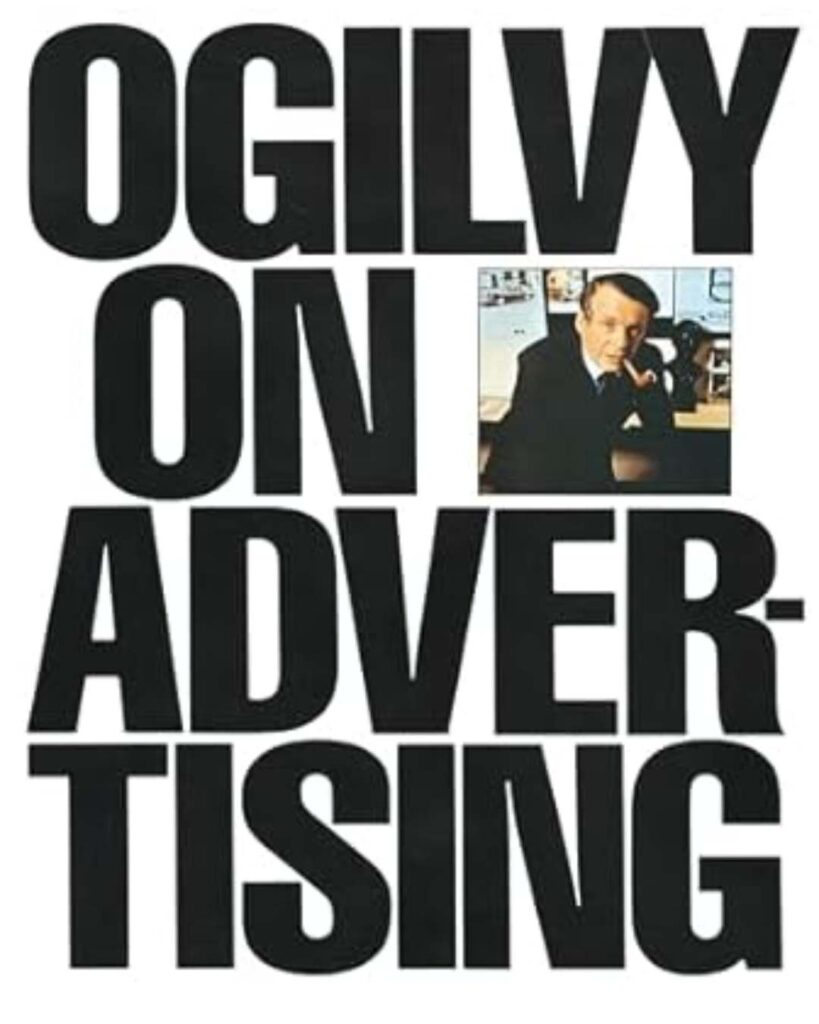
Known as the “Father of Advertising,” David Ogilvy shares his vast experience in this classic work. The book offers timeless insights into creating compelling advertisements and emphasizes the importance of research and creativity in copywriting. It’s a foundational read for understanding effective advertising principles.
2. “The Copywriter’s Handbook” by Robert Bly

A classic that never gets old. Robert Bly breaks down copywriting like a practical guide. He doesn’t just teach theory—he gives real-world strategies. Perfect for beginners and pros alike. Learn how to write copy that sells across different mediums. Bly shows you the exact techniques used by top marketers to grab attention and drive conversions.
3. “Everybody Writes” by Ann Handley
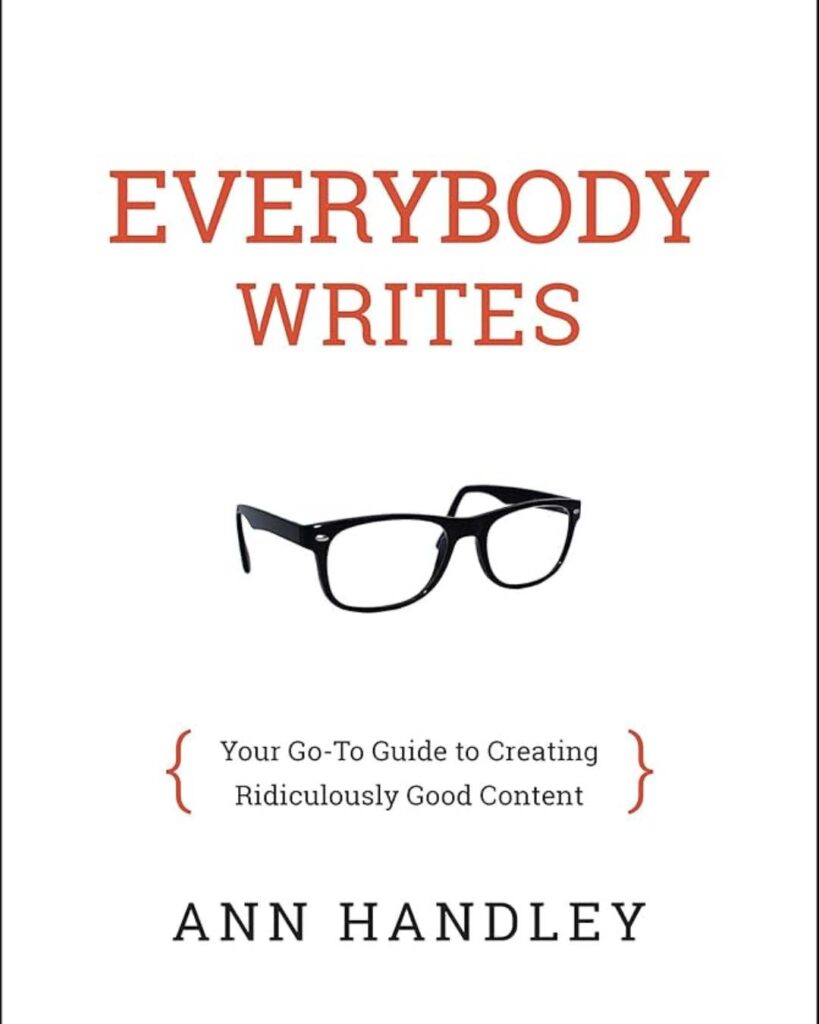
Writing isn’t just for writers—it’s for everyone. Handley’s book is like a friendly writing coach. She breaks down how to create content that’s both interesting and effective. Packed with practical tips for writing in the digital age. Learn to craft messages that are clear, engaging, and actually get results across all platforms.
4. “Made to Stick” by Chip Heath and Dan Heath
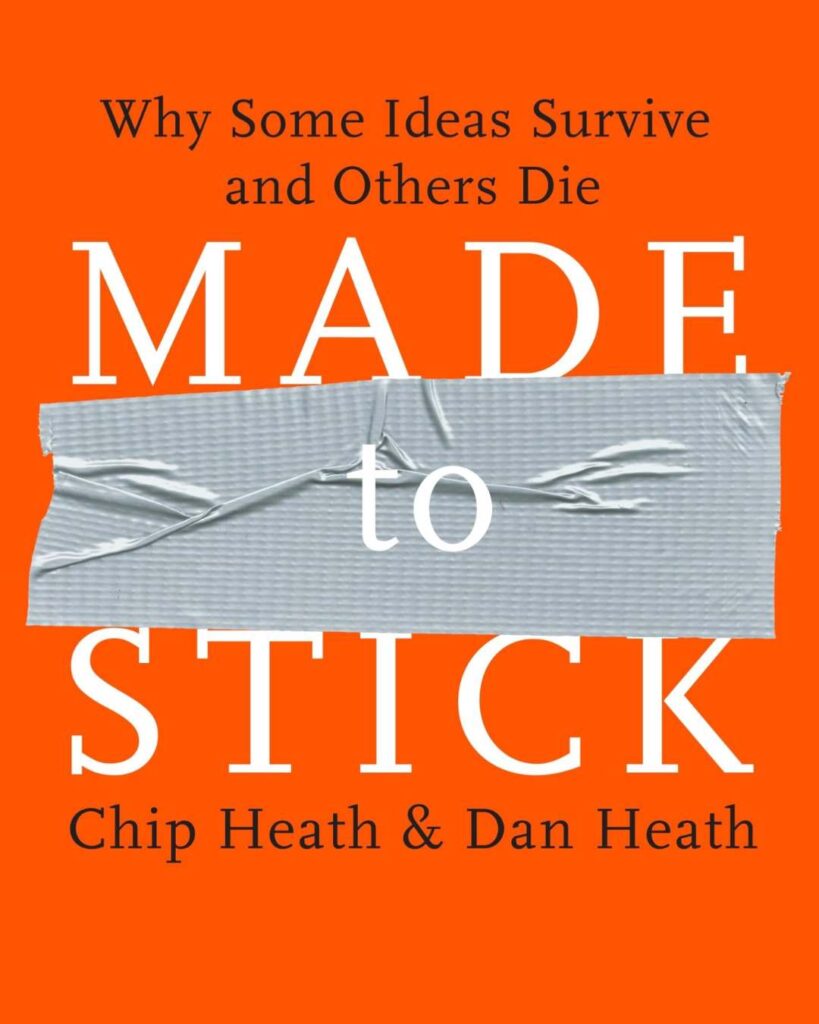
Why do some ideas survive while others die? The Heath brothers crack the code of memorable communication. They explain why some messages stick in people’s minds and others don’t. Packed with fascinating examples and practical strategies. Learn how to make your ideas unforgettable, whether you’re marketing, teaching, or just trying to communicate.
Also Read: How to Become a Freelance Copywriter – Step-by-Step Guide
5. “Building a StoryBrand” by Donald Miller
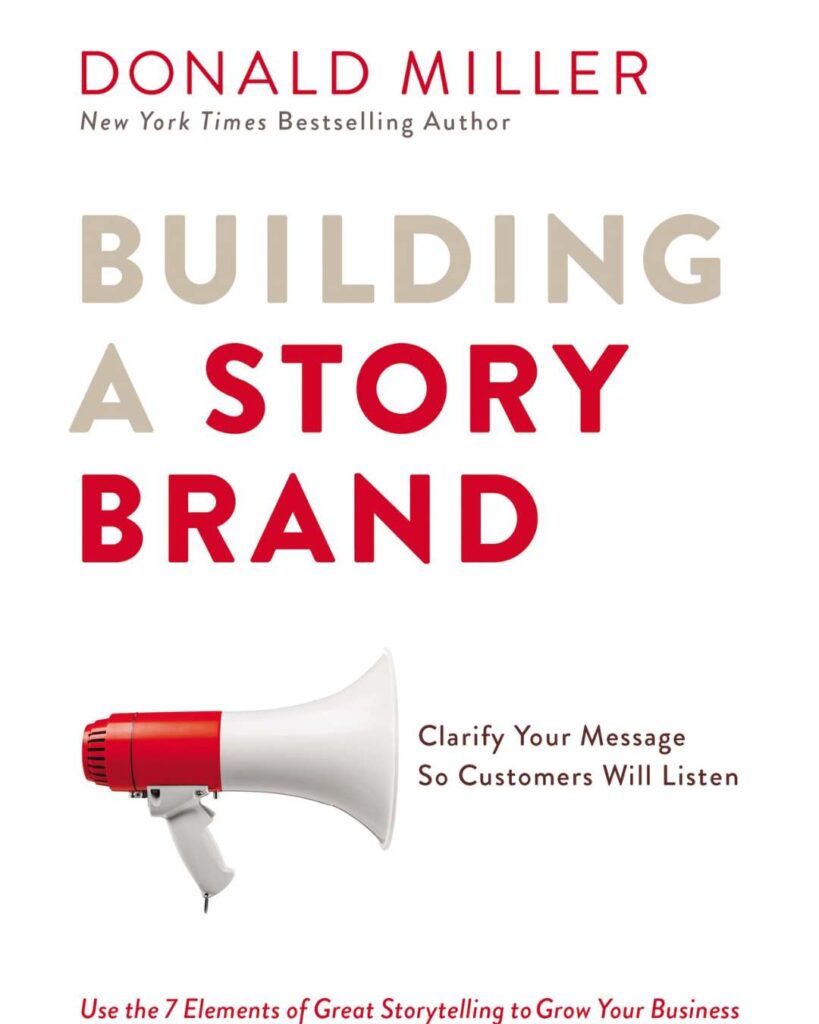
Storytelling isn’t just for novels—it’s for marketing too. Miller reveals how to position your brand as the guide, not the hero. Learn to create clear, compelling messages that cut through the noise. He explains how to structure your communication so customers actually listen. A game-changer for anyone wanting to make their message memorable.
Bonus Recommendation
6. Honorable Mention: “Copywriting Secrets” by Jim Edwards
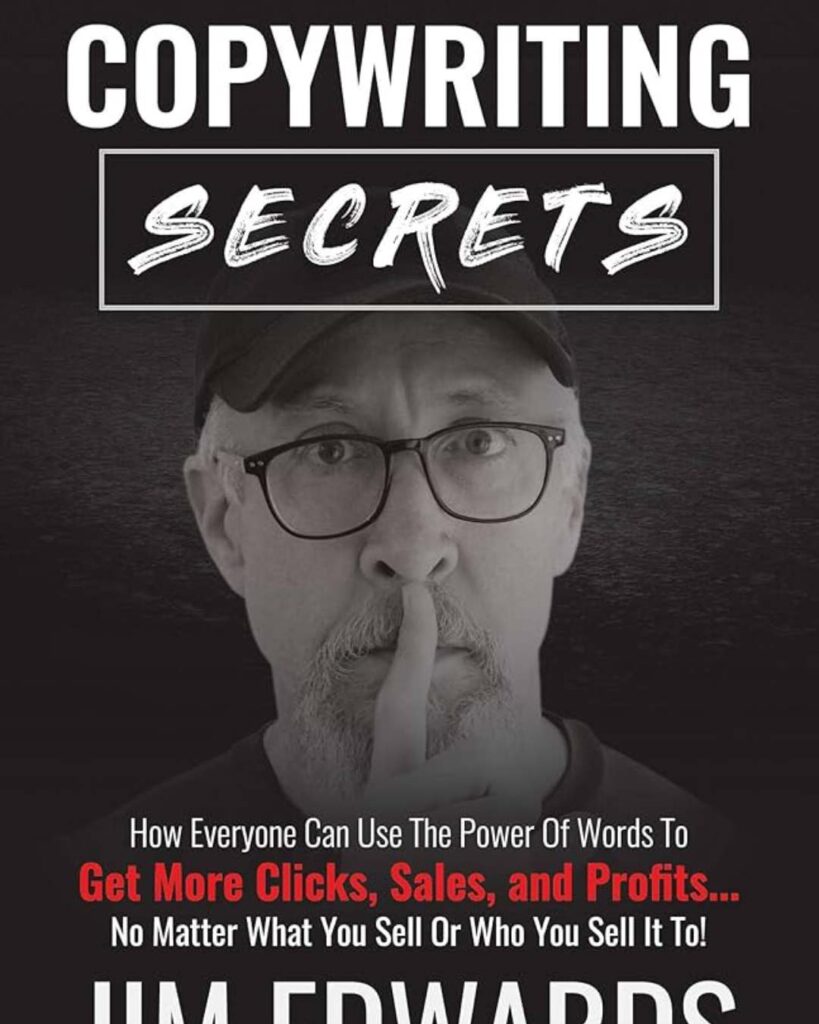
A no-nonsense guide to writing copy that sells. Edwards cuts through the fluff and gives direct, actionable advice. Perfect for entrepreneurs and marketers who want practical strategies. Learn how to write headlines, create compelling offers, and understand what really makes people buy. It’s like having a sales mentor in book form.
Conclusion
Mastering conversion copywriting isn’t a luxury—it’s a necessity in the digital age. By understanding your audience, speaking their language, and strategically designing your message, you can create copy that doesn’t just inform but inspires action. Remember, great conversion copywriting is a blend of art and science, requiring continuous learning, testing, and refinement. Whether you’re a business owner, marketer, or aspiring copywriter, the principles of conversion copywriting can dramatically transform your communication strategy. Start small, stay curious, and watch how the right words can turn potential leads into loyal customers.
FAQ: Conversion Copywriting
1. What Exactly Makes Conversion Copywriting Different?
Unlike regular writing, conversion copywriting has one goal: get people to take action. It’s not about looking fancy or telling a story. It’s about understanding what makes people click, buy, or sign up. Think of it like a friendly salesperson who knows exactly what to say to make you want something.
2. How Does Conversion Copywriting Actually Drive Business Results?
Money talks. Conversion copywriting turns readers into customers. It’s not magic—it’s psychology. By understanding what people want and how they think, you can write messages that speak directly to their needs. Good copy can boost sales, build trust, and make your marketing work harder without spending more.
3. What Massive Mistakes Kill Conversion Rates?
Boring kills sales. Common copywriting sins include too much information, weak calls-to-action, and forgetting about mobile users. People have short attention spans. Your copy needs to be clear, direct, and easy to understand. Focus on solving their problem, not showing off how smart you are.
4. How Personal Can You Get with Your Copy?
Personalization is king. Use customer language. Reference their specific problems. Make them feel like you’re talking directly to them. Generic messages get ignored. But be careful—too personal can feel creepy. Find the sweet spot between familiar and professional.
5. Can You Really Use Humor in Serious Copywriting?
Humor works when it’s genuine. Know your audience. A tech crowd might want different jokes than lifestyle readers. The key is relevance. Don’t force jokes. Use humor that feels natural and connects with your brand. When done right, it can make your message memorable.
6. What Separates Amazing Conversion Copy from Average Stuff?
Great copy tells a story. It’s not just about features—it’s about transformation. Show how your product changes lives. Use real customer experiences. Be specific. Prove your value. The best conversion copy makes people feel something. Emotion drives action more than facts.
7. How Do You Test If Your Copywriting Actually Works?
Data doesn’t lie. Use A/B testing. Try different headlines. Track conversion rates. See what actually gets people to act. What worked yesterday might not work today. Be ready to change. Good copywriters are part writer, part scientist. Always be learning, always be testing.

